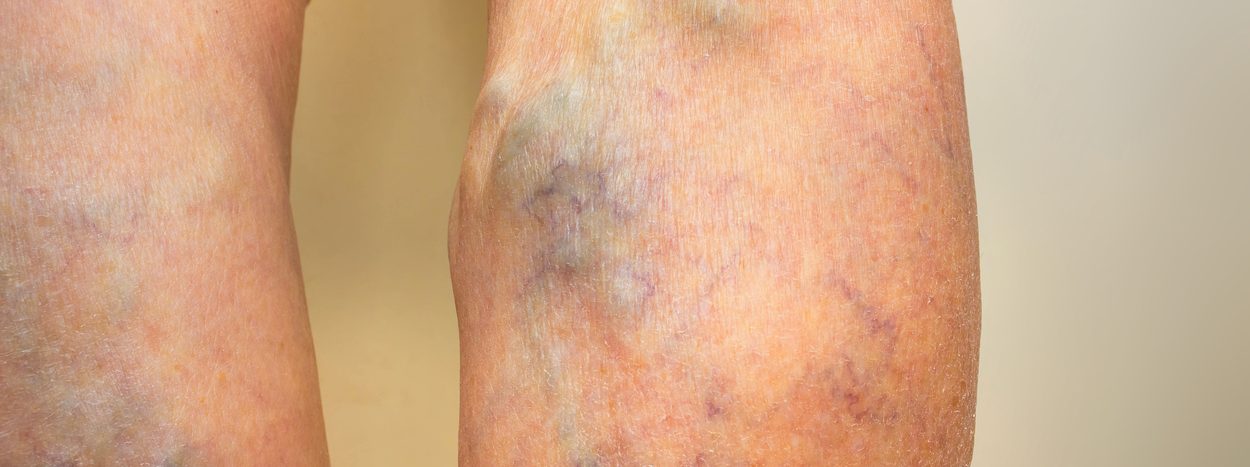At Vein911 in the Greater Tampa Bay Area of Florida, we understand many of you are worried about how to treat this serious vein disease. Many local emergency rooms may be flooded with dozens if not hundreds of patients that are suffering from COVID-19. For the next 2 or so months, hundreds of more people will be diagnosed with Coronavirus and treated for it. Unfortunately, DVT is often deadly within one month of diagnosis without proper treatment.
Do yourself a favor and keep you and your loved ones safe! Vein911 of Tampa, Florida is here for you, providing you clean offices and peace of mind. Since we’re a private practice, we don’t house those who are highly sick and contagious. The last place you want to be is a crowded hospital!
Learn more about DVT below.
What is Deep Vein Thrombosis?
Deep Vein Thrombosis (DVT) is a serious medical problem in which a blood clot develops or even blocks a blood vessel deep within the tissue. Specifically, DVTs develop in veins, which are the blood vessels that carry blood from the far reaches of your body back to your heart. You are most likely to develop these blood clots in your thigh, pelvis or lower leg, but dangerous DVTs can also form in your arm.
Also known as venous thromboembolism, DVT is common. Scientists do not know exactly how many people develop DVT each year, but the Centers for Disease Control and Prevention (CDC) estimates that these blood clots could affect as many as 900,000 people in the United States each year, which works out to about 1 to 2 people out of every 1,000 Americans.
While anyone can develop DVT, some factors can increase the risk of developing this type of vein blood clots. These risk factors include:
- Injury to a vein as the result of bone fractures, severe muscle injury, or major surgery of the abdomen, hip, pelvis, or legs
- Slow blood flow associated with confinement to bed, limited movement from a cast or other causes, paralysis, or sitting for long periods, particularly with your legs crossed
- Increased estrogen from birth control pills, hormone replacement therapies, pregnancy
- Certain chronic illnesses, such as heart disease, lung disease, cancer, inflammatory bowel disease
- Other factors, such as previous DVT or pulmonary emboli, family history of DVT or pulmonary emboli, age, obesity, inherited clotting disorders, and the placement of a catheter (IV) in a central vein
Is deep vein thrombosis deadly?
Venous thromboembolism can be life threatening, especially when the blood clot breaks free from its location. Once loose, the blood clot can travel into the right side of the heart and then into a lung, in a condition known as pulmonary embolism. The clot can prevent blood from flowing into the lung, which is life threatening.
Approximately 60,000 to 100,000 Americans die of DVT/PE, and 10 to 30 percent of those with DVT/PE will die within a month of receiving their diagnosis. Many patients do not realize they have a pulmonary embolism – only about half experience symptoms, according to the CDC. In fact, sudden death is the first symptom in about one-quarter of those with PE.
About one-third of those with DVT will have long-term complications, known as post-thrombotic syndrome. These complications can include pain, swelling, discoloration, and scaling of the skin in the affected limb. Blood clots can also cause chronic venous insufficiency (CVI), a disease in which the veins do not work properly.
What does deep vein thrombosis feel like so I know when to get treated?
Anyone can develop venous thromboembolism, so it is important to know the symptoms of DVT. When symptoms occur, they can include:
- Swelling
- Pain that feels like cramping or soreness, and often starts in the calf
- Tenderness
- Redness or discoloration of the skin
- Feeling of warmth in the leg
However, sometimes people may not experience symptoms that give warning signs of when to see a doctor.
How is deep vein thrombosis diagnosed?
Only a doctor has the tools and education to diagnose deep vein thrombosis, as other conditions can present signs and symptoms similar to DVT.
Physicians diagnose DVT and rule out other conditions by taking a detailed history, performing a physical exam, and doing a venous ultrasound or other tests. Doctors consider the patient’s age, whether swelling is present and if that swelling is getting better or worse, the patient’s mobility, and if the patient has a family history of blood clots or a personal history of previous DVTs, blood clots, cancer, injury, stroke, or surgery.
Next, doctors perform a physical exam of the legs. They look for signs of swelling, the presence of visible varicose veins, tenderness of the calf or thigh, skin redness, or signs of chronic venous insufficiency.
Physicians then perform a venous ultrasound, which is a non-invasive imaging test that can help doctors determine if a clot is present inside the vein. Doctors prescribe deep vein thrombosis treatment based on what they find in the patient’s history, exam, and ultrasound.
Can deep vein thrombosis be cured?
Medical treatment, along with the body’s own healing process, can cure deep vein thrombosis.
Treatment for deep vein thrombosis typically involves medications, the use of compression stockings, and lifestyle changes. DVT treatment may sometimes involve the surgical placement of a special filter in the vein just below the heart, which prevents clots from moving into the lungs. Doctors may even recommend thrombolysis, a surgical procedure in which the surgeon threads a catheter through the vein into the clot, and then inject drugs that dissolve the clot; the surgeon may use a tool to vacuum out the clot, and insert a balloon or stent to hold the treated vein open.
Doctors treat blood clots with blood thinning medication, known as anticoagulants, which decrease your blood’s ability to clot. These anticoagulants, such as Heparin, Lovenox, Eliquis, Xarelto and Coumadin, can also prevent new clots from forming. However, these “blood thinners” do not immediately break up existing clots – only thrombolysis and the body’s natural systems can dissolve blood clots. Most patients with a first-time DVT are on anticoagulants for three months; some patients need to stay on anticoagulation therapy for life to prevent the development of more blood clots.
Doctors frequently recommend the use of compression stockings that squeeze the calf to promote blood flow, which can help stop new blood clots from forming. Lifestyle changes include increasing exercise to stimulate circulation and prevent the formation of new clots.
What is the best treatment for deep vein thrombosis?
The best treatment for deep vein thrombosis depends on a variety of factors, such as the severity and location of the blood clots, and your personal health history. Finding the right vein treatment is as easy as getting a recommendation from a qualified vein doctor.
For more information about venous thromboembolism, consult with a Vein911 Vein Treatment Center Florida vein doctor about diagnosing and treating deep vein thrombosis.













